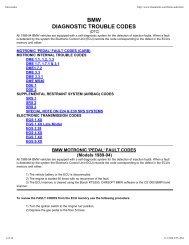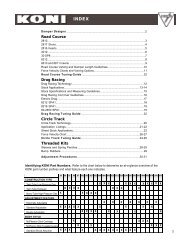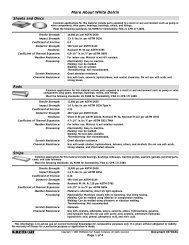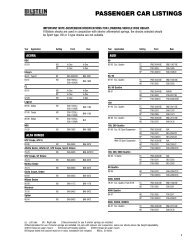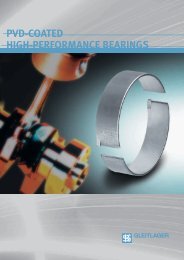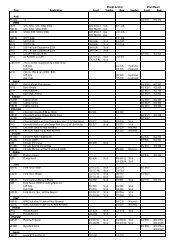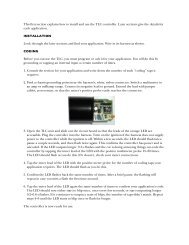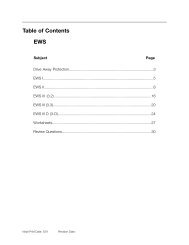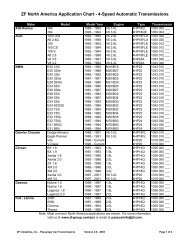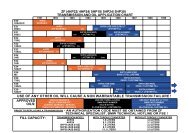Table Of Contents
Table Of Contents
Table Of Contents
You also want an ePaper? Increase the reach of your titles
YUMPU automatically turns print PDFs into web optimized ePapers that Google loves.
Emissions Management<br />
Evaporative Emissions: The<br />
control of the evaporative fuel<br />
vapors (Hydrocarbons) from the<br />
fuel tank is important for the overall<br />
reduction in vehicle emissions.<br />
The evaporative system has been<br />
combined with the ventilation of<br />
the fuel tank, which allows the<br />
tank to breath (equalization). The<br />
overall operation provides:<br />
VAPORS TO EVAPORATIVE<br />
EMISSION VALVE<br />
DM-TL<br />
FILTER<br />
• An inlet vent, to an otherwise<br />
"sealed" fuel tank, for the entry<br />
of air to replace the fuel consumed<br />
during engine operation.<br />
13410095.eps<br />
• An outlet vent with a storage canister to "trap and hold" fuel vapors that are produced by<br />
the expansion/evaporation of fuel in the tank, when the vehicle is stationary.<br />
The canister is then "purged" using the engine vacuum to draw the fuel vapors into the<br />
combustion chamber. This "cleans" the canister allowing for additional storage. Like any<br />
other form of combustible fuel, the introduction of these vapors on a running engine must<br />
be controlled. The ECM controls the Evaporative Emission Valve which regulates purging of<br />
evaporative vapors.<br />
ON-BOARD REFUELING VAPOR RECOVERY (ORVR)<br />
The ORVR system recovers and stores hydrocarbon fuel vapor that was previously released<br />
during refueling. Non ORVR vehicles vent fuel vapors from the tank venting line back to the<br />
filler neck and in many states reclaimed by a vacuum receiver on the filling station’s fuel<br />
pump nozzle.<br />
When refueling, the pressure of the fuel entering the tank forces the hydrocarbon vapors<br />
through the tank vent line to the liquid/ vapor separator, through the rollover valve and into<br />
the charcoal canister.<br />
The HC is stored in the charcoal canister, and the system can then “breath” through the DM<br />
TL and the air filter.<br />
62<br />
MS S54 Emissions Management



